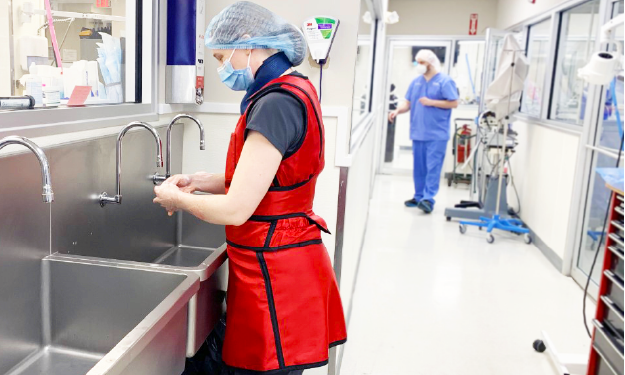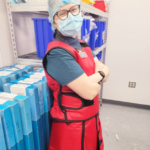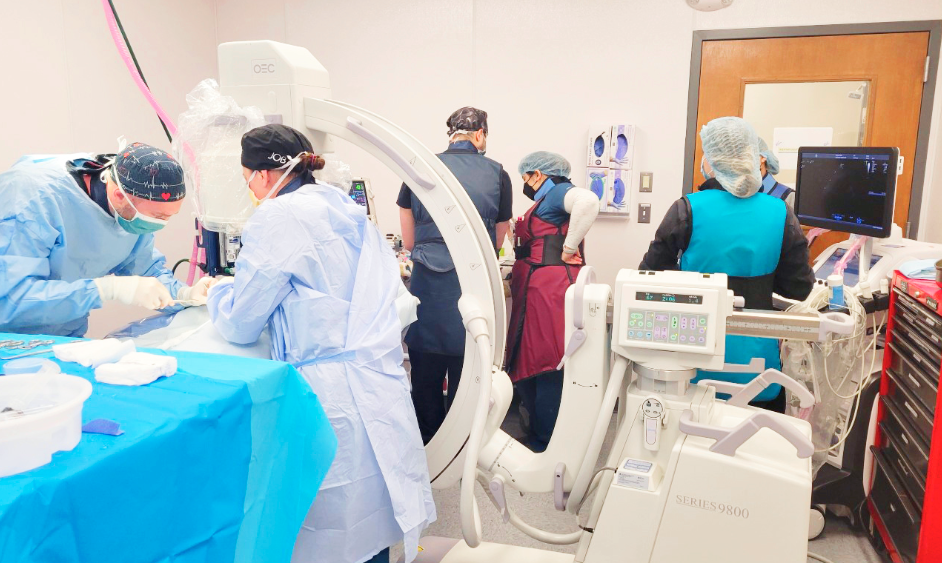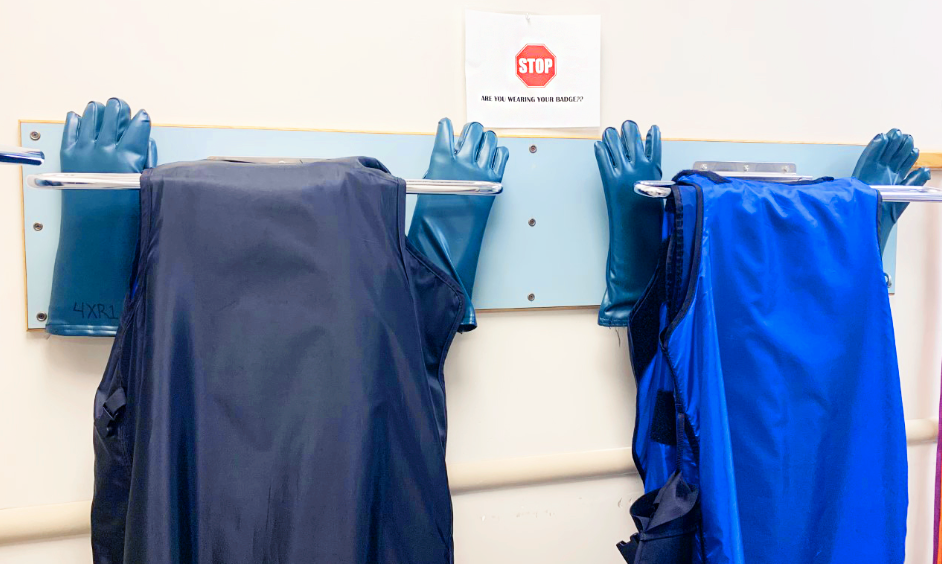The Importance of Lead Shielding in Veterinary Medicine

Have you heard of the term “lead shielding”? Lead shielding refers to the use of lead as a form of radiation protection to shield people or objects from radiation so as to reduce the effective dose.
This is something practiced every day in veterinary medicine. Here is why it’s important.
Radiation Exposure for Veterinary Staff
Exposure to radiation, even in small amounts over a long time, can increase your risk of cancer. A lot of exposure over a short time can cause burns or radiation sickness. There are two types of exposure to radiation:
- Non-ionizing radiation: includes radio waves, cell phones, microwaves, infrared radiation, and visible light.
- Ionizing radiation: includes ultraviolet radiation, radon, x-rays, and gamma rays.
Ionizing radiation is the type of radiation we in veterinary medicine need to be especially protected against. According to our friends at IDEXX: “veterinary technicians may be particularly at risk, as they typically capture x-ray images.”
So, what can we do to protect ourselves?
The Importance of Lead Shielding for Veterinary Staff
Lead is very effective at shielding gamma radiation. Because of the density of lead, its high atomic number, and stable isotopes, lead is ideal for stopping gamma and x-ray radiation.
In both human and veterinary medicine alike, specially made lead gowns, gloves, thyroid shields, and other protective equipment are worn to protect our bodies from as much radiation exposure as possible. Lead is also used for protection shielding in other industries as well, including work in nuclear power plants, labs, and in military equipment.
Lead Shielding for x-rays and fluoroscopy
At our hospitals, lead gowns are most often used for protection when our technicians and assistants are capturing x-rays. But they are also worn during use of our fluoroscopy (interventional radiology) surgical suite. 
Fluoroscopy uses x-rays to display live images in real time on a computer screen. The technology also acquires x-ray movie clips of the procedure. This dynamic evaluation of a patient allows us to image a region of interest continuously, while simultaneously watching on the screen. The machine, called a C-arm, also allows for rotation around the patient so that images can be obtained from any angle. Studies as well as procedures such as airway evaluations, swallow studies, and minimally invasive surgeries can be performed in fluoroscopy.
Our expert friends at HESKA say: “Perhaps the most important component x-ray safety is fostering a work environment in which staff safety is a priority. The recommended attitude towards radiation exposure in veterinary workplaces is to keep staff exposure to radiation As Low As Reasonably Achievable, known by the mnemonic ALARA. When performing an x-ray procedure, each team member should strive to keep radiation exposure levels ALARA by applying the principles of minimizing Time, maximizing Distance, and utilizing Shielding.”
Our hospitals strive to follow these guidelines as strictly as possible. Staff and patient safety is always a top priority! Remember to stay safe, and shield-up when being exposed to radiation!
Written by: Madison Fritsch, Veterinary Assistant – Surgery at Massachusetts Veterinary Referral Hospital
